![]()
- Scuba Skills Tune-Up
- It's Easy...
- Diving in Dominca
- Photography Part 4 - Lighting
- The History of Scuba Diving - Part 1
- What in Crininy is a Crinoid
- Coral Bleaching
- ADA Dive-Cruise Update
- What Should I Take On An International Dive Trip?
- Diving Tips & Tricks: Clearing Ears
- Diving Attitude Part 1 - Pitch Axis
- Buddies From Hell
- Easter Island Statues Come to Deerfield
- ADA T-Shirts For Sale
- Have You Moved or Changed Email Addresses Lately?
- Newsletter Delivery
- ADA Guidelines and Policies
There's Still Time To To Sign Up For This Year's Scuba Skills Tune-Up Event - May 16
--By Rachel Davis
Calling all ADA Members and Prospective Members! Save the
date for Saturday, May 16th for the ADA Scuba Skills
Tune-up Event.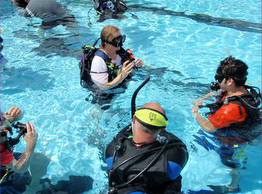
This exciting event will generate awareness of ADA and encourage new members to join. ADA will reach out to the community and provide an opportunity for lapsed scuba divers to brush up on their skills in a relaxed, friendly environment. It will also provide an opportunity for prospective ADA members to meet and get acquainted with the membership, learn about our dive trips and join ADA! New this year – non-divers can Discover Scuba Diving in the pool and experience diving for the very first time.
Date: Saturday, May 16, 9am to 1pm
Location:
A.D. Barnes Park Park Pool
3401 SW 72 Avenue
Miami, FL 33155
(305) 666-5883
Cost: Free to current paid-up ADA members; $25.00 one-day only membership promotion for certified divers wishing to join ADA at the event – offer available to new members only. Discover Scuba diving is $25.00 which includes a provisional ADA membership. Once you complete the open water course and become a certified diver, your ADA membership is free.
![]()
.......to be the owner of the new Active Divers
Association license plate frame, and the best part is it's FREE for the asking.
A colorful red and white license plate frame with the ADA
web address is available free to all ADA members. We will
be distributing them at most ADA events. Each member is
asked to install on your cars, and those of your friends
and family. They need not be a member of ADA or even a
diver. We hope to make our name more prominent around S.
Florida, attract new members, and offer more new programs.
Call Lon at 305-251-4975 if you need more frames.
for the asking.
A colorful red and white license plate frame with the ADA
web address is available free to all ADA members. We will
be distributing them at most ADA events. Each member is
asked to install on your cars, and those of your friends
and family. They need not be a member of ADA or even a
diver. We hope to make our name more prominent around S.
Florida, attract new members, and offer more new programs.
Call Lon at 305-251-4975 if you need more frames.
![]()
--by Carol Cox
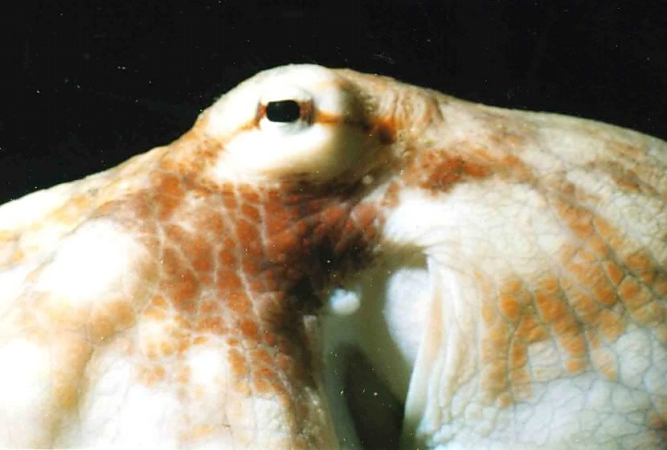
Many people mistake the island of Dominica for the Dominican Republic. Other than both are in the Caribbean, the two couldn't be further apart. Dominica is in the southern Caribbean, north of St. Lucia and south of St. Kitts. There are two areas of great diving, Cabrits in the north end, and the Scotts Head Pinnacle area of the south end. There are several good places to stay and dive in Dominica, my preference being the Castle Comfort Lodge near Roseau. They are right on the water, just outside of town and have comfortable, clean rooms, a restaurant and bar featuring delicious Caribbean cuisine and best of all, right on the premises is Dive Dominica, a complete dive operation with a fleet of roomy, comfortable dive boats. One of the most famous dive sites in Dominica, just south of Roseau, is Champagne, where you can 'effervesce' in the bubbles rising from volcanic vents under the sea floor.
![]()
--By Dan Baeza
Summary - Desirable Features in a Strobe:
- Large Guide Number
- Master/Slave Capability
- Fast Cycle Time
- Variable Beam Angle
- TTL Compatibility
- Small Size and Low Weight
- Daylight Color Temperature
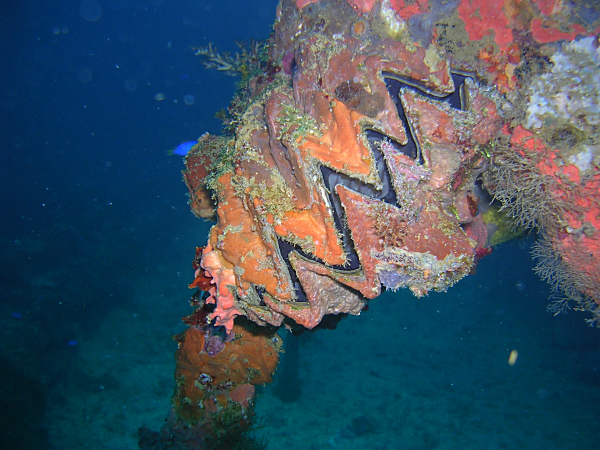
In photography, the proper lighting is vital to make your photo “pop”. Underwater photography is an even more critical environment with regards to lighting. Because water absorbs the color spectrum in graduated steps as you descend, the flash or strobe is necessary to restore color to your subject. The terms “flash” and “strobe” are used synonymously, although “flash” typically implies a light source integral to the camera, while a strobe is a separate outboard device.
The strobe, when properly positioned, also reduces backscatter that tends to show up on dark backgrounds or subjects. Backscatter is caused by particulate in the water that reflects back light into your lens and looks like “snow” on your photo.
What features are desirable in a strobe? Some of the desirable features are a large guide number, capability of being used as a master or a slave, fast cycle time, variable beam angle, TTL compatibility, size and weight, and color temperature. Let’s examine each of these in detail.
![]()
The History Of Scuba Diving - Part One
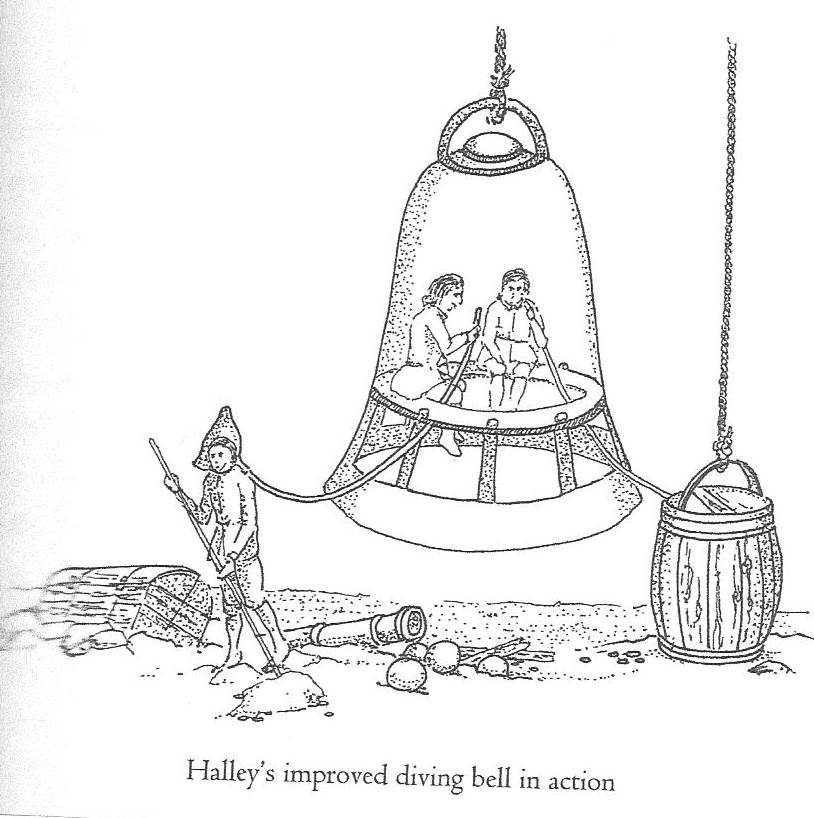 The science
and technology of scuba diving has evolved rapidly during
the time that many of our ADA members have been diving,
making some of us older members feel that we have been
directly involved in seeing most of scuba diving's history
being made. However, modern scuba diving is the result of
thousands of years of trial and error, innovation, ideas
and daring experiments. This first installment in a
two-part series examines the early roots of humans’
efforts to explore the ocean bottoms by breathing while
under water.
The science
and technology of scuba diving has evolved rapidly during
the time that many of our ADA members have been diving,
making some of us older members feel that we have been
directly involved in seeing most of scuba diving's history
being made. However, modern scuba diving is the result of
thousands of years of trial and error, innovation, ideas
and daring experiments. This first installment in a
two-part series examines the early roots of humans’
efforts to explore the ocean bottoms by breathing while
under water.
Before turning back the hands of time, I will remind our readers that the term “scuba” stands for “Self Contained Underwater Breathing Apparatus”. The coining of that acronym for our sport/hobby/profession marked the turning point from diving while tethered to the surface by lines and hoses to being able to move about independently while below the surface. The first practical self-contained system was not invented until 1939 by Christian Lambertsen, whose system was originally called the “Lambertsen Amphibious Respirator Unit.” It was not until a paper Lambertsen wrote in 1952 for the National Academy of Sciences was the phrase used that led to the abbreviation “scuba” for his invention. The next installment of this series will start with Albertsen’s invention, so the present article is limited to the diving apparatus that was not “self-contained.”
For at least five thousand years before the invention of the demand regulator, people have been finding ways to operate below the surface with more than the air they could hold in their lungs with a single breath. Drawn by the desire to harvest sponges, oysters, and other bottom-dwellers, ancient humans started trying to maximize their time under water by breathing through hollow reeds. Alexander the Great, the king of Macedonia,
![]()
 On my first dive ever
off the beach in Cozumel, as we approached 20 feet I saw a
furry plantlike thing growing up off the ocean floor. I
reached out to stroke it. The divemaster scolded me with a
stern look and a shaking finger. My second lesson in
diving after “always breathe” was “don’t touch anything!”
Unbeknownst to me, I had a close encounter with a crinoid.
On my first dive ever
off the beach in Cozumel, as we approached 20 feet I saw a
furry plantlike thing growing up off the ocean floor. I
reached out to stroke it. The divemaster scolded me with a
stern look and a shaking finger. My second lesson in
diving after “always breathe” was “don’t touch anything!”
Unbeknownst to me, I had a close encounter with a crinoid.
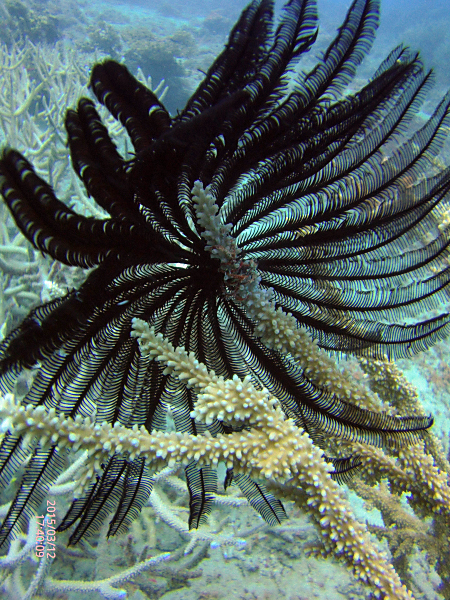
Not a plant at all, crinoids are marine animals that make up the class Crinoidea of the echinoderm family. Crinoidea comes from the Greek word meaning having the form of a lily, which is why I thought it was a plant. Divers see them plentifully in shallow reefs, but they can live at depths as great as 20,000 feet! Though some such as the feather stars are free swimming, most are attached to the sea bottom by a stalk.
Crinoids feed by filtering small particles of food from the sea water with their feather like arms. These are covered with sticky mucus that traps any food that floats past. Once they have caught a particle of food, the cilia are able to propel the food towards the small mouth which is nestled between their arms. They reproduce asexually by releasing both sperm and eggs into the surrounding sea water. The fertilized eggs hatch to release a free-swimming larva. The larva swims free for only for a few days before settling and attaching itself to the bottom. Within 10 to 16 months the crinoid will be able to reproduce.
Next time you go diving look out for these beautiful feathery creatures and you will have yet another marine life specimen to identify and admire.
![]()
--by Jerry Kosakowski

This is the perfect picture of coral bleaching. It is destructive and harmful to our reefs. It makes me wonder if the reefs will even survive. Here are some important facts about it. The main cause is exploitation. That means manmade and I’m not talking global warming, although that can have an effect. It is: overfishing, increased sedimentation and nutrient overloading. The good part is that we as scuba divers have a minimal effect on it.
It can also be caused by extreme temperature changes, both cold and hot. Sometimes the coral may recover depending on how bad the situation is. But overall more and more coral is being killed off by this process. This does not bode well for our reefs our scuba diving adventures.
In 2005 there was a loss of 50% of coral in the Caribbean due to warming. In 2010 there was a massive loss in the Keys due to cold water.
Here is an excellent diagram from National Ocean Service on the topic:

The bottom line is that it is not visual or healthy for the oceans. If the coral dies the fish and everything around it goes too. Sadly most of the fish species live or procreate around coral.
But there is hope. There are many experiments being done to find solutions to this situation. One is the Coral Reef Foundation. We will be having a dive with them this June and learning and helping on this matter. I personally have done this several times and have found it to be very rewarding and informative. Plus the Nedimyerr family (who operates it) are just great people. It’s a family operation and you feel like part of them. If you have tried it, you know, if you haven’t give it a try and help the oceans.
![]()

Our first annual ADA Dive-Cruise aboard the beautiful Emerald Princess is filling up. So far we have five cabins booked for this November 14, 7 day trip to Roatan, Grand Cayman, and Cozumel, and I have heard a lot of enthusiastic chatter among ADA members!!! Just a little reminder that cruises prices vary throughout the year as they are marketed very aggressively, so the sale price on balcony cabins that many of us booked earlier is not currently available. However, I expect that there will be various offers with combinations of on board credits (OBC) and price changes between now and this fall.
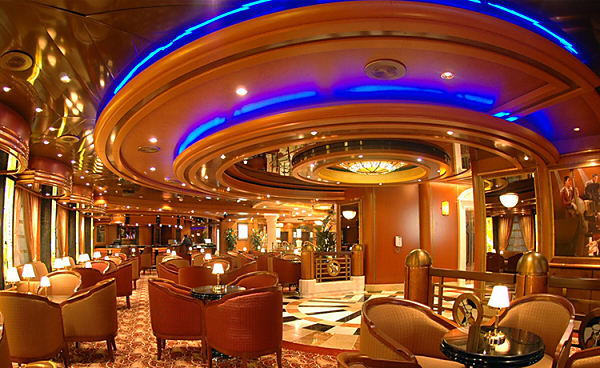 Keep in
mind that our Princess Cruise Planner, Karen Bradder
(1-800-901-1172 ext. 41643 ) ,can only offer what Princess
has to offer when you call. However, she has promised that
she will re-fare the entire group (you must be part of the
ADA Group Booking) to any lower fare that Princess
advertises if I simply call her when I see a better fare.
And don’t forget, depending on the number of cabins booked
and the average price, everyone in the ADA group will get
an OBC for the group booking.
Keep in
mind that our Princess Cruise Planner, Karen Bradder
(1-800-901-1172 ext. 41643 ) ,can only offer what Princess
has to offer when you call. However, she has promised that
she will re-fare the entire group (you must be part of the
ADA Group Booking) to any lower fare that Princess
advertises if I simply call her when I see a better fare.
And don’t forget, depending on the number of cabins booked
and the average price, everyone in the ADA group will get
an OBC for the group booking.
See you on board!!
![]()
There are many options when traveling abroad these days, all the way from taking every conceivable item you own, to taking a credit card with a high limit and buying what you need when you get there! When it comes to a dive trip you need to make additional preparations, as most good dive locations can be a bit remote. First and foremost, you must take a passport and your C-card. You can get “electronic” versions of your C-card from some agencies and as a backup, you can store pictures on your smartphone. Here is a short list of other items you should consider:
- Standard Dive gear: mask, fins, snorkel, BC, regulator, wet suit, gloves, and booties. Be sure and check if some of this gear is included in your dive package, as you may wish to use some rental gear to save weight for air travel. At a minimum, I suggest you take your own regulator and mask in your carry-on luggage.
- Extra dive gear: dive lights and spare batteries for dive computers and lights, safety sausage, maintenance kit, dive bag. These days you need to take all lithium-ion batteries out of any gear that you put in checked baggage due to the fire hazard they can present, not to mention the weight savings. However, it is difficult for the scanners to tell whether your batteries are lithium-ion, nickel-cadmium (nicad), or alkaline, so remove them all to avoid the TSA from tearing apart your luggage.
- Dry bag
- Cameras, chargers, spare batteries, and extra SD cards
- Swimsuits
- T-shirts, shorts, sandals, and a windbreaker. This is one place where the high limit credit card can come in handy to add locally purchased “resort wear” to your wardrobe!
- Sunscreen, medications, contact lens paraphernalia (if you wear them).
- Inform your credit card company that you will be traveling out of the country. Also, make sure that you have more than one credit card in case you have any unexpected problems. Credit cards with security chips in them are frequently required outside the USA, so you should try and have one of these too.
It’s a good idea to take paper copies of your important documents such as passports, C-card and credit cards and store them separately from the originals. And it always helps to make sure that all your gear works before you leave, as it is very expensive to get equipment repaired at a resort.
That’s about it. Get ready for that great dive trip knowing that you will be ready with all that you need!!
![]()
A diver's physical attitude u/w refers to the pitch axis of the body, (the head-to-feet axis) and its position relative to the surface. For maximum locomotion efficiency, energy conservation, minimal air consumption, and comfort, a diver's attitude, while swimming, should be parallel to the surface, 0 degrees. Lets review several of the reasons that can cause a misalignment. Being over weighted, (lead weight, not body fat) requires a diver to swim at a head-high, feet-low attitude, an angle of 15-45 degrees, to compensate and maintain a given depth. The obvious correction is to adjust the amount of weight. (see previous articles on buoyancy control) Less obvious, but nearly equal in importance, is the placement of the weight along the axis. If a properly weighted diver still experiences the necessity to swim on an angle, and his feet sink when he stops, weight placement is the culprit. The solution is to move the center of gravity toward the diver's head. For divers who use a weight belt, slide the belt from the lower hips toward the mid-section of the torso. This is difficult while above water, but under water is easier. If this is not physically possible, (divers less than 6' tall will find this difficult) remove 1-2 lbs from the belt and clip to upper BCD. For divers using the integrated weight system, remove 1-2 lbs. from the BCD pocket and clip an equal amount on the upper BCD.
Finally, air in the BCD will shift the center of gravity toward the diver's feet and cause the diver to swim on an angle, even though his buoyancy is neutral. In previous articles on buoyancy, it was assumed that the diver makes weight adjustments to achieve neutral buoyancy with no air in the BCD. So this diver should go back and adjust weights with no air in BCD.
A footnote: Peter Taylor and I were diving the Tenneco Towers several years ago. At about 80 feet we noticed a diver (not an ADA diver) in a vertical position, about 50 feet from the tower. She was kicking frantically to maintain depth control. Her breathing rate was off the charts. We instantly recognized this as a classical symptom of gross over-weight. We knew instinctively she would soon panic, exhaust her air, and plunge rapidly to the 120' bottom.
Her "buddies" were oblivious to her plight. With no one else to help, we raced out, grabbed her arms, and pulled her over to the tower. Gripping a cross beam of the tower, she regained a normal breathing cycle and calmed herself. Then her buddies arrived and escorted her to the surface.
Points to ponder: Do you want that kind of "buddy"? Did she have the necessary experience/skill to make that dive? Why was she grossly over-weighted? Wonder why ADA screens members for advanced dives?
Coming soon- Diving attitude Part 2 - The Roll Axis.
One of the most common reasons for a diver to abort a dive, or give up diving altogether, is the inability to clear ear passages when descending and, in some cases, ascending. The Valsalva maneuver is the most common method – pinching your nose shut while gently exhaling but this doesn't always work for everyone. If you experience ear pain, stop and ascend until the pain ceases then continue a slow descent as long as the pain does not return. If you cannot descend, try some of these tricks:
- 'Pop': when you swallow, you should hear a 'pop' in both ears, letting you know both eustachian tubes are open.
- Chew gum before the dive because it makes you swallow often. Gently equalize your ears every few minutes.
- Pre-pressurize at the surface but remember to do it gently. Descend feet first – it is more difficult to equalize when your head is down.
- Look up. Extending your neck tends to open your eustachian tubes. Also, bend your head from side to side to help open tubes.
- Use a descent line. Stop descending if you feel pressure and wait or ascend a few feet.
- Avoid milk before diving – milk tends to increase your mucus production.
- Use a good fitting mask. Water up your nose can irritate mucus membranes.
- Push your jaw forward and tense your throat muscles until you hear your ears 'pop'
- Pretend that you are going to yawn – push the jaw forward and down to pull the eustachian tubes open. Some divers are able to control those muscles and hold their tubes open for continuous equalization.
Although not recommended but practiced by many divers, take a Sudafed prior to diving. The ramifications of this method are that the medicine might wear off before the end of your dive or make you feel nervous but many divers swear by it. The natural methods of equalization should be practiced before using a prophylactic. Have a safe and comfortable dive!
(adapted from Selene Yeager in Sport Diving Magazine)
![]()

Have You Moved or Changed Email Addresses Lately?
If so, please email or call us with your current information. you may send an email to: Dr. Dan Baeza, Membership Chair at dmbaeza@bellsouth.net. You can also call Dan at 954-260-8225 and leave a message with your new contact information.
![]()
Want your newsletter delivered via snail-mail? Contact Carol Cox at ccox911@att.net and request a printed copy. Be sure to put "ADA Newsletter" in the subject.
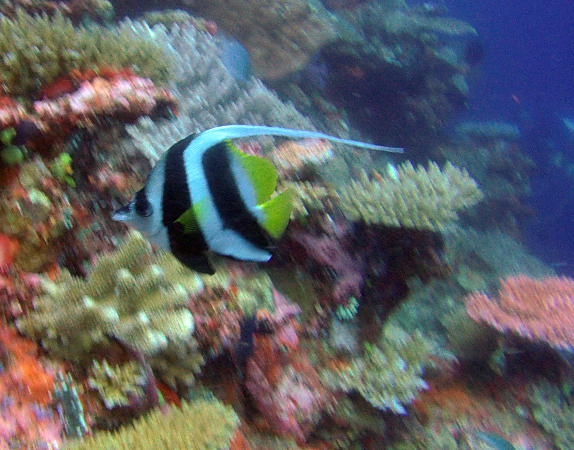
Easter
Island Statues Come To Reef Off Deerfield Beach
--from the Miami Herald,
April 26
Rapa Nui Reef- a collection of cast concrete statues modeled after Easter Island's famed stone figures- will be deployed about 75 feet deep off Deerfield Beach June 7, 2015. The 15 figures will stand 6 to 22 feet-tall on a sandy bottom. ADA will plan to dive this unique reef later this year.
If you are interested, please call Lon at 305-251-4975,
Show your pride in the best dive club anywhere! Sizes small, medium, large, xlarge, xxlarge. Some tank tops available also. All shirts are $10 each.
CALL LON AT 305-251-4975 AND PLACE YOUR ORDER TODAY!. Lon will deliver it to you on your next dive

